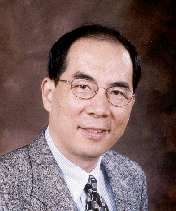News & Events
Laser Surface Texturing, Crystallization and Scribing of Thin Films in Solar Cell Applications
Dr. Y. Lawrence Yao, Columbia University
Monday, November 4, 2013
3 p.m.–4:30 p.m.
Sloan Auditorium
Abstract:
A one-step laser processing is investigated for introducing light-trapping structure and crystallization on a-Si:H thin films, which can potentially simultaneously alleviate the two weaknesses of a-Si:H, i.e., low efficiencies andlight induced degradation. The nanoscale spikes formed on the a-Si:H film surface by irradiation of both femtosecond (fs) infrared and nanosecond (ns) excimer lasers enhanced light absorption, while the formation of a mixture of hydrogenated nanocrystalline silicon (nc-Si:H) and a-Si:H after crystallization suggests that the overall material stability can potentially improve. In addition, a comparison of absorptance spectra for various surface morphologies and crystallinity is developed and the absorptance across the solar spectrum shows that the combination of surface texturing and crystallization induced by laser processing is very promising for a-Si:H thin film solar cell applications. Currently, scribing of CdTe thin-film solar cells is performed using glass-side laser processes which have led to increased scribe quality. Defects formed during scribing such as micro cracks, film delamination, thermal effect and tapered sidewall geometries, however, still keep solar panels from reaching higher efficiencies. The experimental investigation shows that film removal mechanisms for different materials are due to laser-induced ablation, thermal stress and micro-explosion processes. The formation mechanisms and mitigation techniques of the defects during micro-explosion process are studied. A fully-coupled thermal and mechanical finite element model is developed to analyze the laser-induced spatial-temporal temperature and thermal stress distribution responsible for SnO2:F film removal, and a plasma expansion model is also investigated to simulate the film removal of CdTe/Cds multilayer due to the micro-explosion process.
Bio:  Y Lawrence Yao is Professor in the Department of Mechanical Engineering at Columbia University, where he directs the Advanced Manufacturing Laboratory. He joined Columbia University in 1994 and served as Department Chair of Mechanical Engineering from 2005 to 2011. He received his Ph.D. and M.S. degrees from the University of Wisconsin-Madison, and his B.E. degree from the Shanghai Jiao Tong University, China, all in Mechanical Engineering. He has pioneered research in many areas of laser materials processing, including laser assisted removal, shaping, joining, and property modification of various materials, and innovative laser applications in renewable energy and biomedical fields. His group has published over 250 technical papers. He is Editor, Journal of Manufacturing Science and Engineering of American Society of Mechanical Engineers (ASME). He received many awards including the Blackall Machine Tool and Gage Award from ASME, Fulbright Senior Scholar Award, and Outstanding Paper Award from NAMRI. He is a Fellow of ASME, SME, and LIA.
Y Lawrence Yao is Professor in the Department of Mechanical Engineering at Columbia University, where he directs the Advanced Manufacturing Laboratory. He joined Columbia University in 1994 and served as Department Chair of Mechanical Engineering from 2005 to 2011. He received his Ph.D. and M.S. degrees from the University of Wisconsin-Madison, and his B.E. degree from the Shanghai Jiao Tong University, China, all in Mechanical Engineering. He has pioneered research in many areas of laser materials processing, including laser assisted removal, shaping, joining, and property modification of various materials, and innovative laser applications in renewable energy and biomedical fields. His group has published over 250 technical papers. He is Editor, Journal of Manufacturing Science and Engineering of American Society of Mechanical Engineers (ASME). He received many awards including the Blackall Machine Tool and Gage Award from ASME, Fulbright Senior Scholar Award, and Outstanding Paper Award from NAMRI. He is a Fellow of ASME, SME, and LIA.
